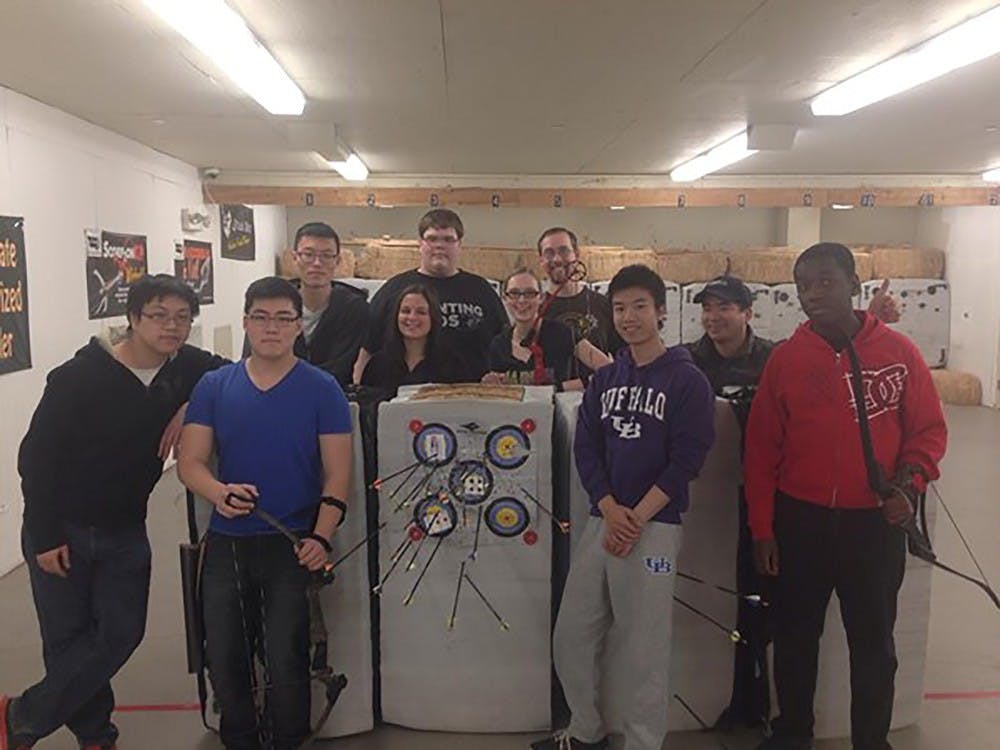Devon Marr wanted to share her passion for cosplay with the rest of the UB after watching an artist design outfits online. She decided to start a club and later realized she couldn’t afford a sewing machine.
Like the Cosplay club, all Student Association clubs begin with the “Starting a Club Packet,” available in the SA office in 350 Student Union. According to SA Vice President Evan Chen, there are currently 20 temporary clubs in the process of becoming permanent clubs.
Cosplay club is currently a temporary club and, like other temporary clubs, must independently grow its budget.
In order to become temporary, a club needs at least 10 student signatures, a constitution and an adviser or coach. Sports clubs must register with an NCAA league to compete. To become a permanent club, student groups must host two club meetings, two club events, participate in two community service events, two SA events and complete two fundraising events. Clubs must also wait two semesters before applying for permanency.
Some of these guidelines have posed both successes and issues.
Being a temporary club has its difficulties, especially financially, according to Marr, a junior history and anthropology major and president of Cosplay club.
“We have zero budget right now because we’re a temporary club,” Marr said.
The club has been using members’ sewing machines in order to continue teaching and creating their costumes, which sometimes can be a bit of a hassle, she said.
Once clubs are fully approved by SA, permanent clubs receive 50 percent of their budget from SA, according to Chen.
Once the club becomes permanent, in order to stay an official club it must host two club events, fulfill two community service events and two SA events per semester.
The only restrictions placed on clubs is it cannot be the same as any club already on campus and it cannot violate the mandatory student activity fee guidelines, according to SA President James Ingram. Guidelines include having original receipts, invoices and contracts. The contracts must be viewed and submitted at least two weeks before events.
Marr hopes the increasing interest in the Cosplay club will allow it to become a permanent club so she can afford sewing machines. There are between 15-20 people who attend weekly meetings and it has more than 200 likes on its Facebook page.
SA provides resources to help clubs stay permanent. For example, clubs members can participate in safety walks or volunteer to work at Spring Fest to help with the requirements.
Amanda Nubelo, a sophomore biomedical sciences major and president of the Archery club, said the SA’s requirements put a strain on her club.
“[SA] is kind of the reason why our club is suffering,” Nubelo said. “I’ve done my best, but I’ve spent so much time dealing with the bureaucracy that I can’t focus on events. I have to worry about just managing these new rules. I had plans and I can’t do any of them because I’m so busy trying to deal with [these problems].”
Chen said the main problem when applying for permanency is when temporary clubs transfer from one semester to next, new students get involved and communication between new and old members becomes an issue.
But Not all SA clubs have had a hard time becoming a permanent club.
Isabelle Caneda, a sophomore business administration and computer science major and vice president of Glee club, felt the SA’s requirements for clubs make sense.
“[The members of SA are] investors who want to know that their investments are going to the right places,” Caneda said in an email. “Asking us to host events, be active in the UB community, fundraise and take part in philanthropy is just making sure their money isn’t being wasted on a faulty investment.”
Being a permanent club provides stability, Caneda said. The SA’s knowledgeable staff helps Caneda to organize events. This is key for club success, she said.
“Clubs are made because of common interests, but stay afloat so long as they’re run like a business,” Caneda said.
Temporary clubs’ effort does not go unnoticed, Ingram said.He is proud of how hard students work at their clubs in order to succeed.
“It never ceases to amaze me how passionate our club members are for their clubs, and how hard they work throughout the year planning meetings and trips, and putting together events,” Ingram said.
Marr advises students not to be afraid to try something new.
“By giving your best effort you’ll have something to show SA that you really mean that you want to be a real club, that this isn’t just some wild phase,” Marr said.
Marissa Fielding is a staff writer and can be reached at features@ubspectrum.com





